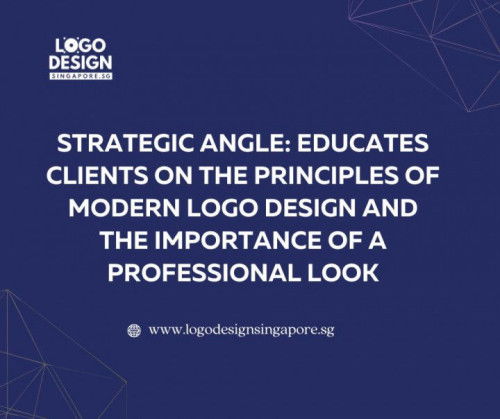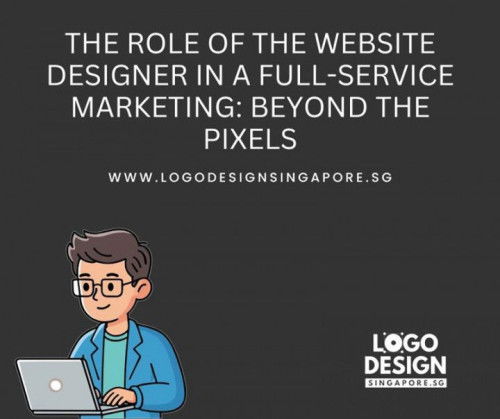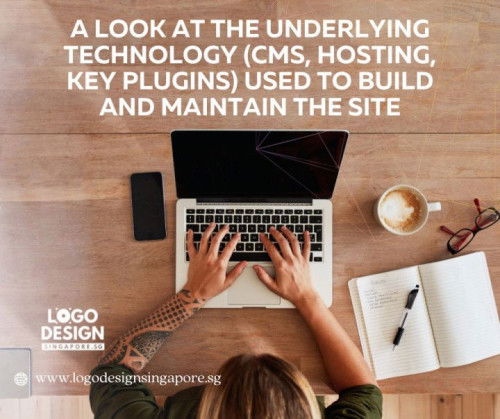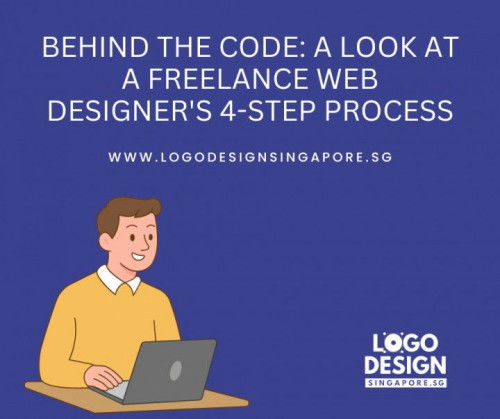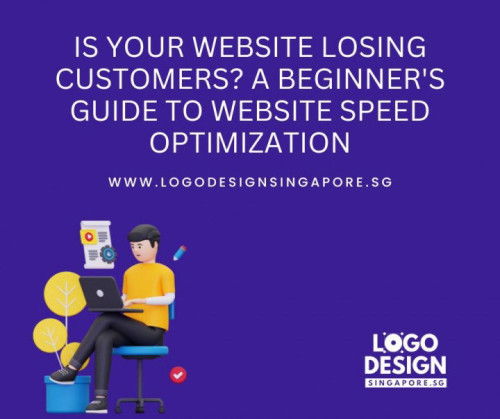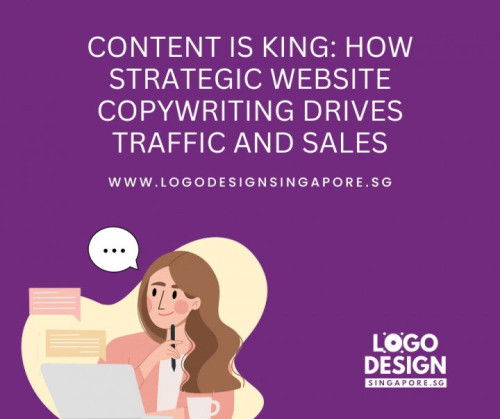




Is Your Website Losing Customers? A Beginner’s Guide to Website Speed Optimization- Logo Design Sing
Speed is no longer a luxury — it is a necessity. A slow-loading website can cost you more than just frustration; it can cost you potential customers, revenue, and even your credibility. For business owners and brands competing online, website speed optimization is one of the most critical factors influencing user experience, engagement, and search rankings. This guide breaks down what website speed optimization means, why it is so crucial for your business, and how you can approach it, even if you are just starting out. If you are working with a Website Designer Singapore or development team, understanding the basics will help you make informed decisions and ensure that your site performs at its best. Why Website Speed Matters Your website acts as a digital storefront, and first impressions are formed within seconds. If visitors have to wait too long for a page to load, they are likely to abandon the site altogether. A fast-loading website has several benefits: Improved User Experience — Visitors appreciate smooth navigation and fast-loading content, which keeps them engaged longer. Higher Conversion Rates — The faster the site, the more likely users are to complete a desired action, whether it is filling out a form or making a purchase. Better Search Engine Rankings — Search engines consider page speed as part of their ranking algorithm, so a faster website is more likely to appear higher in search results. Lower Bounce Rates — When users are not forced to wait, they are more inclined to explore multiple pages, reducing the chance of leaving after just one visit. Key Metrics to Measure Website Speed Before you can improve your site’s speed, you need to know how it is performing. A few key metrics provide a clear picture of your website’s loading performance: Page Load Time — The total time it takes for a page to fully display its content. Time to First Byte (TTFB) — How quickly the server responds after a user requests a page. Largest Contentful Paint (LCP) — Measures how fast the main content of a page becomes visible to users. First Input Delay (FID) — Indicates how quickly a page becomes interactive after loading. Cumulative Layout Shift (CLS) — Measures visual stability by tracking how much elements shift while loading. Understanding these metrics helps you pinpoint performance issues and monitor progress as you optimize. The Impact of Poor Website Speed Slow websites create a negative ripple effect on multiple aspects of a business. Delays in loading can frustrate visitors and push them toward competitors. Moreover, search engines can lower your site ranking if performance metrics indicate poor speed. This means reduced visibility, fewer visitors, and ultimately lower revenue. A sluggish site can also harm your brand image. Visitors may perceive your business as outdated or unreliable, even if your products or services are excellent. Over time, this can damage trust and make it harder to retain loyal customers. Common Factors Affecting Website Speed Many variables contribute to a site’s performance. Knowing these factors can help you collaborate better with your Website Designer Singapore or developer to find solutions. Server Performance — If the hosting server is slow or overloaded, your website will suffer regardless of how well it is designed. File Sizes — Large media files and unoptimized code can significantly slow down loading t imes. Unnecessary Plugins or Scripts — Too many third-party tools can weigh down your site. Caching Issues — Without proper caching configurations, browsers must reload all data every t ime a user visits a page. Content Delivery Method — Serving content from a single location can create delays for users accessing the site from faraway regions. Identifying which of these areas is slowing down your site is the first step toward improvement. Beginner-Friendly Approaches to Speed Optimization The good news is that website speed optimization does not require advanced technical knowledge to get started. Several best practices can make a noticeable difference: Optimizing Hosting Setup Choosing a reliable hosting provider with strong performance can reduce server response t ime and improve load speed. Streamlining Website Code Clean, efficient code ensures browsers can process and display pages quickly. Minimizing unnecessary elements and removing redundant scripts can significantly boost performance. Enabling Browser Caching Caching allows browsers to store certain parts of a website so that they do not need to be downloaded again on repeat visits. Using a Content Delivery Network (CDN) A CDN distributes website content across multiple servers around the world, ensuring that users access data from the nearest location. Compressing Images and Files Reducing file sizes without sacrificing quality can dramatically improve page load time. Optimizing for Mobile Devices A large percentage of users access websites on smartphones. Ensuring a mobile-friendly design that loads quickly on smaller screens is critical. The Role of a Website Designer in Speed Optimization Working with a skilled Website Designer Singapore can make the entire process smoother. A designer who understands performance best practices will ensure that your site is not only visually appealing but also optimized for speed. The designer’s responsibilities can include: Creating lightweight layouts that do not overload the browser. Choosing typography and visual elements that maintain balance between aesthetics and performance. Collaborating with developers to implement efficient code structures. Testing responsiveness to ensure a consistent experience across devices. A well-informed Website Designer understands that speed is part of user experience and integrates optimization into the design process from the very beginning. Balancing Speed with Design While it may be tempting to add elaborate animations or heavy visual features, speed should always remain a priority. Striking a balance between design and performance is essential. Overloading a site with unnecessary elements may create a stunning visual display, but if it slows loading time, visitors may never stay long enough to appreciate it. When working on your website, aim for simplicity and clarity. A clean layout, concise content, and thoughtfully chosen images can look professional and help maintain fast loading times. Ongoing Maintenance for Lasting Performance Website speed optimization is not a one-time task. As your business grows, you may add new pages, media, or features that can gradually slow performance. Regular monitoring ensures that your site continues to deliver the best experience. Establish a routine for: Tracking performance metrics regularly. Updating plugins, themes, and scripts to their latest versions. Removing outdated content or unused files. Reviewing hosting plans as traffic increases. Consistent maintenance keeps your site performing at its peak and reduces the risk of losing potential customers due to avoidable delays. Final Thoughts In today’s digital environment, speed is a critical factor that directly impacts your website’s ability to attract and retain customers. Understanding the basics of website speed optimization allows business owners and marketers to make informed decisions that strengthen online presence and improve results. Partnering with a knowledgeable Website Designer Singapore ensures that speed is prioritized alongside aesthetics. By taking proactive steps to monitor and enhance your site’s performance, you can create a seamless experience that keeps visitors engaged, improves search rankings, and ultimately drives more conversions. If your website feels slow, now is the time to act. The sooner you address performance issues, the sooner you can stop losing potential customers and start turning your site into a powerful, high-performing tool for your business. Pop over here : https://www.logodesignsingapore.sg/freelance-web-designer-singapore/
Read more
Content is King: How Strategic Website Copywriting Drives Traffic and Sales — Logo Design Singapore
Businesses fight fiercely for online visibility, customer attention, and brand loyalty. Among all the elements that contribute to a successful online presence — design, functionality, branding, and marketing — one factor consistently stands out as the most powerful driver of results: content. The phrase “Content is King” is more than just a buzzword; it’s a truth that underscores how words, tone, and messaging can directly influence traffic, engagement, and sales. This article explores how strategic website copywriting becomes the backbone of digital success, why businesses should treat it as a cornerstone of their online strategy, and how it elevates every part of the customer journey. The Role of Website Copywriting in the Digital Era Website copywriting is more than putting words on a screen. It is the strategic use of language to communicate value, establish trust, and motivate users to take specific actions. Whether it is drawing in new visitors from search engines, nurturing their interest with persuasive messaging, or guiding them to conversion points, copywriting acts as the connective tissue between business goals and customer intent. The modern consumer no longer tolerates vague, generic messaging. They want clarity, transparency, and answers to their needs. Strategic website copywriting ensures that these expectations are not only met but exceeded, paving the way for stronger customer connections and repeat engagement. Why Content is the Foundation of Traffic Traffic is the lifeblood of any website. No matter how sleek the design or innovative the technology, without visitors, a site serves little purpose. Strategic copywriting fuels traffic in two critical ways: Search Engine Optimization (SEO) Search engines analyze web content to determine relevance and authority. Well-written, keyword-optimized copy signals to search engines that a website provides real value, improving its rankings. This boosts organic traffic — the most sustainable and cost-effective channel for attracting visitors. User-Centered Messaging When copy directly addresses the pain points and aspirations of potential customers, it resonates on a deeper level. This resonance keeps visitors on the site longer, reduces bounce rates, and creates signals of value for search algorithms. Without quality content, even the best optimization efforts or advertising campaigns will fall f lat. The ability of copywriting to blend technical SEO requirements with emotional resonance makes it indispensable. Converting Visitors into Customers Driving traffic is only half the battle. The ultimate goal of a website is to turn visitors into leads or customers. This is where copywriting demonstrates its true power. Strategic copywriting is designed with conversion in mind. It guides the reader on a carefully structured journey, from initial awareness to action. Clear headlines grab attention, concise yet persuasive body copy sustains interest, and compelling calls-to-action push readers toward decision-making. Well-crafted copy does not feel forced. Instead, it anticipates objections, addresses them with authority, and builds trust at every stage. This subtle persuasion turns casual browsers into loyal buyers. Content as a Brand Voice Amplifier Every business has a story to tell, a unique value proposition, and a vision for its audience. But without clear messaging, these elements remain hidden. Strategic website copywriting acts as the amplifier of brand voice, ensuring that every word reflects the identity of the company. Consistency in tone and language reinforces credibility. When users visit a site, they should instantly understand the personality of the brand — whether it is professional, approachable, innovative, or authoritative. A skilled website designer Singapore may create the visual framework, but copywriting breathes life into it, allowing the brand to engage customers on both a rational and emotional level. The Psychology Behind Words At the heart of copywriting lies psychology. Words trigger emotions, influence perceptions, and inspire actions. Strategic website copywriting draws on principles of human behavior to maximize impact. Clarity Reduces Friction: Visitors should instantly grasp what a business offers without confusion. Authority Builds Trust: Confident, factual language positions a brand as reliable and credible. Emotion Drives Action: Words that evoke excitement, relief, or security push readers to engage. By understanding how different audiences think and feel, copywriters craft content that aligns with user intent and subtly guides them toward desired outcomes. Enhancing User Experience Through Copy User experience (UX) is often associated with visuals and navigation, but copywriting plays a crucial role in shaping it. Clear, concise, and engaging content ensures that users find what they need without unnecessary effort. From homepage headlines to product descriptions and contact page prompts, every word contributes to the overall journey. Poorly structured or confusing content disrupts this journey, while strategic copywriting creates seamless pathways that make browsing intuitive and enjoyable. This synergy between UX and copywriting strengthens retention and boosts conversion rates. It ensures that every visitor not only stays longer but also leaves with a positive impression. The Sales Funnel Powered by Content Every website is essentially a digital sales funnel, guiding users from discovery to decision. Strategic copywriting ensures that each stage of the funnel is addressed with the right message: Awareness: Informative, keyword-optimized content introduces the brand to new visitors. Consideration: Persuasive messaging highlights benefits and builds trust. Decision: Strong calls-to-action encourage immediate steps such as signing up, purchasing, or contacting the business. By mapping copywriting to each stage of the funnel, businesses maximize their chances of conversion while delivering value at every interaction. Content as a Long-Term Asset Unlike paid advertising campaigns that disappear once budgets run out, strategic copywriting builds long-term value. High-quality content continues to attract visitors, generate leads, and influence purchasing decisions long after it is published. This compounding effect means that businesses investing in strong copywriting today are essentially planting seeds for future growth. Every blog post, landing page, and product description becomes part of a growing ecosystem that supports sustainable online success. Why Businesses Cannot Ignore Strategic Copywriting In today’s digital-first economy, ignoring content strategy is equivalent to ignoring customers. Strategic website copywriting does not simply fill space — it sets the foundation for visibility, trust, and conversions. Businesses that fail to prioritize it often struggle with: Low search engine rankings Poor engagement metrics High bounce rates Limited customer loyalty On the other hand, those that integrate copywriting into their core digital strategy enjoy measurable growth, stronger connections, and lasting competitive advantages. The Future of Website Copywriting As technology evolves, so does the role of content. AI-driven insights, personalization, and voice search optimization are shaping the future of website copywriting. Yet, the essence remains unchanged: words must resonate with humans first. No matter how sophisticated tools become, the emotional and psychological impact of well crafted copy will always set successful businesses apart. For this reason, companies must continue to treat content as their most valuable digital asset. The phrase “Content is King” endures because it captures a universal truth: without compelling, strategic messaging, no website can achieve its full potential. Design may catch the eye, functionality may impress, but it is content that convinces, converts, and creates lasting connections. Strategic website copywriting drives traffic by improving visibility and relevance while simultaneously turning that traffic into tangible results through persuasive, human-centered messaging. It shapes brand identity, enhances user experience, and builds long-term value that no other marketing investment can match. For businesses serious about digital growth, content cannot be treated as an afterthought. It must be viewed as the heart of the online strategy. The right words, placed in the right context, make all the difference between a website that simply exists and one that thrives. And while a skilled website designer Singapore may lay the foundation of digital presence, it is powerful content that rules as king — driving traffic, sales, and success. Pop over here : https://www.logodesignsingapore.sg/
Read more
The Psychology of Touch: How Textures Transform Business Card Perception -Logo Design
Networking often starts with a LinkedIn request or an email signature, the business card continues to hold its ground as a tactile ambassador of your brand. While the fonts, colors, and layout are undeniably important, one often overlooked element — texture — can make or break how your business card is perceived. Why? Because touch is deeply psychological. Welcome to the intersection of design and psychology — where your business card’s texture tells a story before a single word is read. Touch: The Most Underrated Sense in Branding Visuals dominate the world of marketing. We spend time choosing logos, colors, and images that speak to our brand personality. But what about touch? Touch is a powerful, subconscious communicator. According to neuroscientific studies, people form lasting judgments about objects — and even other people — based on haptic (touch-related) cues. This is why textured surfaces often feel more “premium” or “trustworthy” than flat, smooth ones. When someone holds your business card, they are not just looking at your name or title. They are feeling your brand. The First Impression Starts in the Fingers Within the first three seconds of receiving a business card, the recipient has already formed a perception of your professionalism and brand identity. Much of this perception happens through their fingertips. Let’s break it down: Soft textures (like velvet or suede finishes) are often associated with luxury, elegance, and high-touch service. Rough textures (like kraft paper or uncoated stock) suggest authenticity, sustainability, and rugged reliability. Smooth, glossy finishes can evoke modernity, sleekness, and corporate professionalism. Embossed or debossed textures create depth and memory — literally and psychologically. This sensory input sticks — people are more likely to remember and retain business cards that feel distinct. How Texture Impacts Business Card Perception Trust and Credibility Texture adds weight — both literally and symbolically. A flimsy, paper-thin business card sends a message of cheapness or lack of effort. In contrast, a thick, textured card immediately conveys that thought, care, and resources were invested into presentation. Subconsciously, that translates to trust. For industries where reliability is paramount (finance, legal, consulting), a card with textured linen or heavy cotton stock can elevate your credibility instantly. 2. Memory Retention Cognitive psychologists have long studied the “von Restorff effect” — the idea that things which stand out are more likely to be remembered. A textured business card that feels different is more likely to be retained, noticed, and remembered. In a stack of 30 standard cards, the one with a letterpress imprint or a sandpaper-like finish will catch the hand and eye every time. 3. Perceived Value A premium-feeling business card can change how people value your services. It’s not just a piece of card stock — it becomes a symbol of your brand’s worth. For luxury brands, real estate professionals, or creative agencies, investing in high-end textures like suede touch, metallic foils, or soft-touch laminates suggests exclusivity and quality. Popular Textured Finishes and What They Communicate Let’s explore how different textures subtly shape business perceptions: Soft-Touch (Velvet or Suede Lamination): Silky and luxurious to the touch, this finish tells your client that your brand is premium, professional, and refined. It’s frequently chosen by consultants, luxury brands, and high-end service providers. Embossing/Debossing: These finishes raise or indent portions of the card, like logos or names, adding dimension and tactility. It gives the sense that your brand pays attention to details and wants to leave a lasting impression. Linen Texture: Subtle ridges mimic the weave of fine fabric. Often associated with tradition, respectability, and classic professionalism, this texture is popular in finance, law, and education. Kraft Paper or Recycled Stock: With a natural, earthy feel, this texture resonates with eco conscious and artisanal brands. It suggests that your business values sustainability and authenticity. Spot UV Coating: A glossy coating applied selectively to parts of a matte card, offering contrast in texture. It reflects innovation and sleek sophistication, favored by tech firms and modern startups. Psychological Case Study: Texture in Action Imagine you’re at a networking event. Two people hand you their business cards. One is a glossy, thin rectangle — common and quickly forgettable. The other is a thick, suede-finished card with an embossed logo and a smooth UV-spot on the company name. Instinctively, your f ingers linger. You examine it again, intrigued. Without realizing it, you’ve already: Judged the brand as higher-end Assigned more value to the service Created a lasting sensory memory This is not about spending more. It’s about spending smart — using psychology to amplify perception. Industry-Specific Recommendations Without a Table If you’re in finance or legal professions, textured matte or linen finishes give an air of sophistication and dependability. A high-quality embossed logo shows attention to professionalism and detail. For those in tech or startups, clean matte finishes with UV spot detailing can communicate innovation and clarity. Combining a minimalist design with a slick texture says, “we’re sharp and future-focused.” Real estate professionals benefit from tactile finishes that exude polish and luxury — such as suede or soft-touch laminates paired with foiling or raised ink. Creative agencies often push boundaries — uncoated papers, recycled stocks, or letterpress designs with hand-crafted vibes are ideal for communicating authenticity, creativity, and uniqueness. Eco-conscious businesses can reflect their core values by using textured recycled stock, kraft paper, or cotton rag with raw edges. These tactile choices speak directly to the sustainability minded consumer. Luxury brands benefit from thick stock, metallic foil stamping, and velvet-touch finishes — tactile elegance that aligns with premium price points and exclusivity. Don’t Just Design — Strategize It’s tempting to focus only on visual layout, but a winning business card is a strategic sensory experience. Consider these tips: Think beyond ink. Your logo might look good on screen, but how does it feel when pressed into cotton stock or highlighted with UV gloss? Test multiple textures. Order sample packs to feel what aligns best with your brand. Balance feel and function. Some textured cards may not be ideal for writing on. If you need to jot appointments or notes, go for uncoated back surfaces. Digital vs. Physical: Why Texture Still Wins Some argue that digital business cards are the future. While digital cards have their place, they lack the multi-sensory impact of a physical card — especially in face-to-face networking. Physical business cards: Make eye contact and handshakes more memorable Allow people to feel your brand Stay in wallets, desks, and pockets — longer than digital ones stay in apps In a world filled with fleeting screens, something tangible stands out. Final Thoughts: The Science of First Touch Every detail on your business card contributes to a narrative — and texture speaks volumes. It bypasses logic and hits the emotional brain instantly. The feel of a card can communicate reliability, innovation, creativity, or luxury — all in a split second. Don’t underestimate the power of touch. By thoughtfully choosing your business card design texture, you turn a simple piece of paper into a memorable experience. In networking, that can be the difference between being remembered — or being forgotten. visits us : https://www.logodesignsingapore.sg/
Read more
Retro and Vintage Fonts: Bringing Nostalgia into Business Logo Design -Logo Design
One element that consistently leaves a lasting impression is typography. Among the vast ocean One element that consistently leaves a lasting impression is typography. Among the vast ocean of fonts available, retro and vintage styles have made a bold return — not just as a trend, but as a meaningful design choice in modern branding. These nostalgic fonts, with their charming imperfections and historical flair, are proving to be powerful tools in Business Logo Design. Retro and vintage fonts don’t merely echo the past; they invoke emotion, establish identity, and make businesses stand out in a saturated market. In this article, we’ll explore how these t imeless styles contribute to Business Logo Design, why they resonate with audiences, and how companies can leverage them for lasting visual impact. Understanding Retro and Vintage Typography Before diving into their role in logo design, it’s important to distinguish between “retro” and “vintage” fonts. Retro fonts typically refer to typefaces inspired by the aesthetics of the 1970s to early 1990s. Think bold, geometric, funky, and colorful. These fonts are often associated with pop culture, disco, arcade games, and early tech branding. Vintage fonts draw inspiration from earlier eras — generally from the 1880s to the 1960s. They tend to be ornate, classical, and hand-crafted in appearance, reflecting the artistry of sign painters, letterpress printers, and the industrial revolution. Both font types tap into the idea of memory and legacy, making them ideal choices for brands that want to evoke trust, heritage, or a particular cultural moment. The Psychology of Nostalgia in Business Logo Design Nostalgia is a powerful emotion. It reconnects us with feelings of comfort, safety, and simpler times. In marketing, nostalgia has long been used to create emotional ties between a brand and its audience. Retro and vintage fonts, when used strategically in Business Logo Design services in Singapore, tap into this psychological trigger. Whether it’s the bold slab serifs of old soda brands or the curved script of mid-century diners, these fonts communicate familiarity. Consumers are more likely to engage with a brand that reminds them of something they trust or remember fondly — even if they’re experiencing it for the first time. This emotional pull strengthens brand recognition and fosters long-term loyalty. In a world where consumers are bombarded with sterile, hyper-modern branding, the warmth of a nostalgic font offers a refreshing counterpoint. Why Retro and Vintage Fonts Work in Business Logo Design 1. Differentiation in a Crowded Market In industries where minimalist, sans-serif logos dominate, a retro or vintage font immediately sets a business apart. It signals that the brand is confident in its identity and is willing to embrace a unique visual voice. 2. Storytelling and Brand Identity Retro and vintage fonts add layers of meaning to a logo. A script font from the 1950s might suggest family values and craftsmanship, while a bold retro typeface might conjure fun, innovation, and creativity. This storytelling aspect helps brands communicate their ethos without saying a word. 3. Versatility and Timelessness Despite their association with the past, these fonts remain relevant due to their versatility. When combined with modern design principles — like clean layouts or contemporary color palettes — they strike a balance between old and new, making them adaptable to a wide range of businesses. Strategic Use of Nostalgic Fonts in Logos Using retro or vintage fonts in Logo Design isn’t about blindly selecting a decorative typeface. It’s about ensuring that the font aligns with the brand’s personality, target audience, and message. Here’s how to do it strategically: a. Define the Brand’s Core Message Before choosing a font style, it’s essential to understand the brand’s voice. Is it playful, serious, traditional, or quirky? The right nostalgic font should amplify this voice. b. Balance with Other Design Elements Typography should never work in isolation. Pairing a retro or vintage font with appropriate colors, layout, and supporting graphics ensures cohesion. For instance, a vintage font paired with modern iconography can create an innovative hybrid style. c. Ensure Readability No matter how visually engaging a font may be, if it compromises readability, it fails its primary purpose. Choose fonts that maintain legibility at various sizes, especially when scaled down for mobile or small-format printing. d. Use for the Right Business Types While retro and vintage fonts can work for any industry, they tend to excel in businesses that want to showcase authenticity, history, or a specific lifestyle — think food and beverage, fashion, artisanal products, creative agencies, or niche tech brands. Key Design Principles When Using Nostalgic Fonts When integrating retro or vintage fonts into Small Business Logo Design, keeping design fundamentals in mind ensures the final result is effective: Hierarchy: Make sure the font complements the overall layout and doesn’t overpower other elements. Consistency: If used with other fonts or design motifs, ensure they share the same aesthetic tone. Whitespace: Allow room around intricate or decorative fonts to avoid visual clutter. Contrast: Pair decorative fonts with simpler elements to maintain balance and draw attention to key parts of the logo. Challenges with Retro and Vintage Fonts While their appeal is strong, using retro or vintage fonts comes with a few challenges: Cliché Risks: Overuse or poor execution can make a design look gimmicky or outdated. Brand Confusion: If a retro font is used without alignment to brand strategy, it can send mixed messages to consumers. Licensing and Quality: Many vintage-style fonts are handcrafted and may require special licensing. Additionally, not all available fonts are optimized for digital use or high-resolution output. To mitigate these issues, it’s wise to work with professional designers who understand how to harmonize nostalgia with modern branding demands. The Future of Retro in Logo Design As businesses continue to seek meaningful ways to connect with their audiences, the use of nostalgic elements in branding is likely to grow. But rather than a full-scale return to old styles, what we’re witnessing is a fusion — a blending of retro inspiration with contemporary design sensibilities. This hybrid approach allows companies to enjoy the best of both worlds: the warmth and emotion of the past with the clarity and innovation of the present. Final Thoughts Retro and vintage fonts offer more than just aesthetic charm. They tell stories, stir emotions, and help brands stand out in a sea of sameness. In the world of Business Logo Design, they are invaluable tools for creating logos that are not only visually compelling but emotionally resonant. For brands looking to leave a lasting impression — one that feels both familiar and fresh — incorporating nostalgic typography into their business logo design is a smart, strategic move. Whether seeking to honor heritage, spark connection, or evoke a timeless spirit, these fonts provide the creative bridge between memory and modernity. When thoughtfully used, retro and vintage fonts do more than just look good — they make people feel something. And in branding, that feeling is everything. visits us : https://www.logodesignsingapore.sg/
Read more
Bold Fonts in Logos: How Heavy Typography Makes an Impact — Logo Design Singapore
Typography plays a crucial role in defining a brand’s identity. Among the various font styles, bold fonts stand out as a powerful choice that conveys confidence, strength, and modernity. Companies across industries leverage heavy typography to make a lasting impression on their audience. From tech startups to luxury brands, bold fonts have become a staple in logo aesthetics. But why do they work so well? And how can you use them effectively in your Logo Designing process? This article explores the significance of bold fonts in logos, their psychological impact, and the best practices for incorporating them into your designs. The Power of Bold Typography in Logo Designing A logo is more than just a symbol; it’s a visual representation of a brand’s personality. Typography, especially bold fonts, plays a vital role in shaping this identity. Heavy typefaces provide weight, authority, and a commanding presence that ensures a brand is both recognizable and memorable. Why Choose Bold Fonts for Logo Designing? Strong Brand Identity: Bold fonts exude confidence and stability, making them ideal for brands that want to project strength. Instant Recognition: A heavier typeface is easier to read at a glance, helping brands make an immediate impact. Versatility: Bold fonts work well across different platforms, from digital to print media. Minimalist Appeal: A strong typeface eliminates the need for excessive design elements, making the logo cleaner and more effective. The Psychological Impact of Bold Fonts Typography influences perception. When consumers see a bold font in a logo, they associate it with: Trust and Authority: Financial institutions and legal firms often use bold fonts to communicate reliability. Modernity and Innovation: Tech companies opt for bold, sleek fonts to project a cutting edge image. Energy and Excitement: Sports brands and entertainment companies use bold typography to convey dynamism and enthusiasm. Luxury and Elegance: While serif fonts are common in high-end brands, a well-designed bold font can also exude sophistication. Best Industries for Bold Typography in Logos 1.Technology and Startups Tech companies favor bold sans-serif fonts to project innovation and clarity, which all utilize heavy typography to enhance brand recognition. 2. Fitness and Sports Using bold fonts to symbolize strength and endurance. Heavy typography in this industry reflects determination and energy. 3. Fashion and Luxury Brands use bold fonts to stand out in the competitive fashion industry. Their typography signifies exclusivity and confidence. 4. Food and Beverage Fast food chains incorporate bold fonts to create a friendly and inviting atmosphere. The heavy typography makes their branding instantly recognizable. How to Use Bold Fonts Effectively in Logo Designing 1.Choose the Right Typeface Not all bold fonts work for every brand. Consider the following factors when selecting a typeface: Sans-serif vs. Serif: Sans-serif fonts appear modern and clean, while serif fonts convey tradition and elegance. Geometric vs. Organic: Geometric bold fonts create a structured, tech-oriented look, while organic bold fonts add warmth and personality. 2. Maintain Balance and Readability While bold fonts demand attention, they should not compromise readability. Ensure that: The spacing between letters (kerning) is optimized. The font weight does not overpower other design elements. The logo remains legible across different sizes and mediums. 3. Pair Bold Fonts with Simplicity A bold font should not compete with overly complex graphics. Many successful logos rely solely on typography. If you choose a bold font, keep additional elements minimal. 4. Use Contrast for Maximum Impact Contrast enhances visibility and draws focus to your logo. Experiment with: Color contrast: Dark fonts on a light background (or vice versa) improve readability. Font weight contrast: Combining bold typography with a lighter tagline creates visual hierarchy. 5. Adaptability Across Platforms A bold font should be scalable for digital and print applications. Test the logo on: Websites and social media icons Business cards and packaging Billboards and promotional materials Common Mistakes to Avoid When Using Bold Fonts in Logo Designing 1.Overuse of Boldness While bold fonts make a statement, using them excessively within a logo or tagline can create visual clutter. 2. Choosing an Overly Trendy Font Trends come and go. A timeless bold font ensures long-term brand consistency. 3. Ignoring Branding Consistency Your bold font should align with your brand’s personality. A financial firm using an overly playful bold font might send the wrong message. 4. Skipping User Testing Before finalizing a logo, test its effectiveness by gathering feedback. Ensure that the bold typography communicates the right message. Future Trends in Bold Typography for Logo Designing With evolving design preferences, bold typography in logos is also seeing new trends: 3D and Gradient Bold Fonts: Adding depth and color variations enhances visual appeal. Animated Bold Logos: Dynamic typography that shifts weight or color in digital media. Eco-friendly Bold Fonts: Sustainable brands are opting for organic, heavy typefaces with natural curves. Final Thoughts: Is Bold Typography Right for Your Brand? Bold fonts in Logo Designing are not just about making text thicker; they are a strategic design choice that impacts brand perception. Whether you are aiming for authority, modernity, or playfulness, the right bold font can elevate your brand identity. Before selecting a bold font for your logo, analyze your industry, audience, and branding goals. Experiment with different weights, pairings, and contrasts to create a design that leaves a lasting impression. A well-crafted bold font logo doesn’t just look strong — it builds brand recognition, enhances trust, and sets your business apart in a crowded market. Would you like assistance in choosing the perfect bold font for your next logo design project? Explore the endless possibilities of Logo design with expert guidance today! Pop over here : https://www.logodesignsingapore.sg/
Read more


